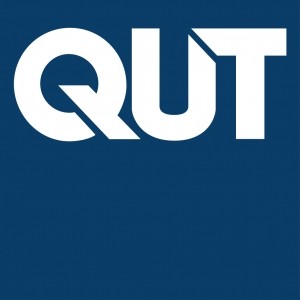Photos of university / #qutrealworld
The Bachelor of Medical Imaging (Honours) aims to provide pupils with opportunities to build up their abilities and knowledge from the clinical medical imaging environment, equipping them with the capability to use scientific and technical knowledge in professional practice. The honours component is embedded inside the program and will provide students with a strong base in research and critical thinking which will assist them while they enter contemporary evidence-based clinical practice. Students will study a collection of topics in preparation for a research project that's part of their final year studies, together with advanced imaging and professional practice placements.
The Medical Radiation Practice Board of Australia. Graduates will be eligible to apply for membership of the Australian Society of Medical Imaging & Radiation Therapy
- Year 12 or equivalent
- Assumed knowledge: English, or Literature, or English and Literature, or English as Another Language (Units 3 & 4, C)
- Mathematical Methods or Specialist Mathematics (Units 3 & 4, C) and Profession (Units 3 & 4, C).
The Queensland University of Technology offers various financing options for students enrolled in the Medical Imaging program to support their educational and living expenses. Domestic students can benefit from government-funded schemes such as the Commonwealth Supported Place (CSP), which reduces the overall tuition fees, making higher education more accessible and affordable. Additionally, students may be eligible for financial assistance through the Youth Allowance, Austudy, or the Higher Education Loan Program (HELP), which provides income-contingent loans to cover tuition fees and other educational costs. International students are required to pay full tuition fees, which vary depending on the specific course and its duration; these fees are payable upfront or through a payment plan arranged with the university.
The university also offers scholarships specifically targeted at students studying health sciences, including the Medical Imaging program, based on academic merit, financial need, or community involvement. These scholarships can significantly offset tuition fees and other related costs such as textbooks, equipment, and travel expenses. Students are encouraged to explore external funding opportunities from government bodies, charitable organizations, and professional associations relevant to healthcare and medical imaging professions.
In addition to scholarships, students can access financial planning services provided by the university’s student support services to develop personalized budgets and financial management strategies, ensuring they can meet their educational expenses throughout their studies. Part-time work opportunities are available both on and off-campus, allowing students to earn income while continuing their coursework. The university also advises students to consider health insurance options, such as Overseas Student Health Cover (OSHC) for international students, to manage potential medical costs during their period of study.
Overall, Queensland University of Technology is committed to making Medical Imaging education financially feasible through a combination of government support, scholarships, payment plans, and employment opportunities, enabling students to focus on their academic and professional development without undue financial burden.
The Bachelor of Medical Imaging at Queensland University of Technology (QUT) is a comprehensive undergraduate program designed to prepare students for a career in the dynamic field of medical imaging and radiation science. This program combines theoretical knowledge with practical skills, ensuring graduates are well-equipped to work in diverse healthcare settings, including hospitals, clinics, and diagnostic laboratories. The curriculum covers fundamental topics such as anatomy, physiology, radiation physics, and patient care, alongside specialized courses in various imaging modalities including X-ray, computed tomography (CT), magnetic resonance imaging (MRI), ultrasound, and nuclear medicine. Emphasis is placed on developing technical expertise in operating imaging equipment, understanding the principles of radiation safety, and applying diagnostic techniques accurately to assist in medical diagnosis and treatment planning. Students also engage in laboratory work and clinical placements, which are integral components of the program, providing hands-on experience in real-world environments under the supervision of experienced radiographers and medical imaging professionals. The program aims to foster critical thinking, problem-solving, and communication skills, essential for effective patient interaction and interdisciplinary collaboration. QUT ensures that students are aware of current industry standards and ethical considerations in medical imaging, preparing them for professional certification and lifelong learning. Upon graduation, students are eligible to register with relevant professional bodies, such as the Medical Radiation Practice Board of Australia (MRPBA). The program’s strong industry links and focus on employability support graduates in securing roles within the healthcare sector, contributing to the advancement of medical imaging technology and patient care. The Bachelor of Medical Imaging at QUT typically spans three years of full-time study, with options for part-time study and pathway programs for further specialization or postgraduate education. The university's state-of-the-art facilities, dedicated teaching staff, and partnerships with healthcare providers ensure a high-quality education experience, making it a leading choice for students aspiring to enter the medical imaging profession in Australia.










